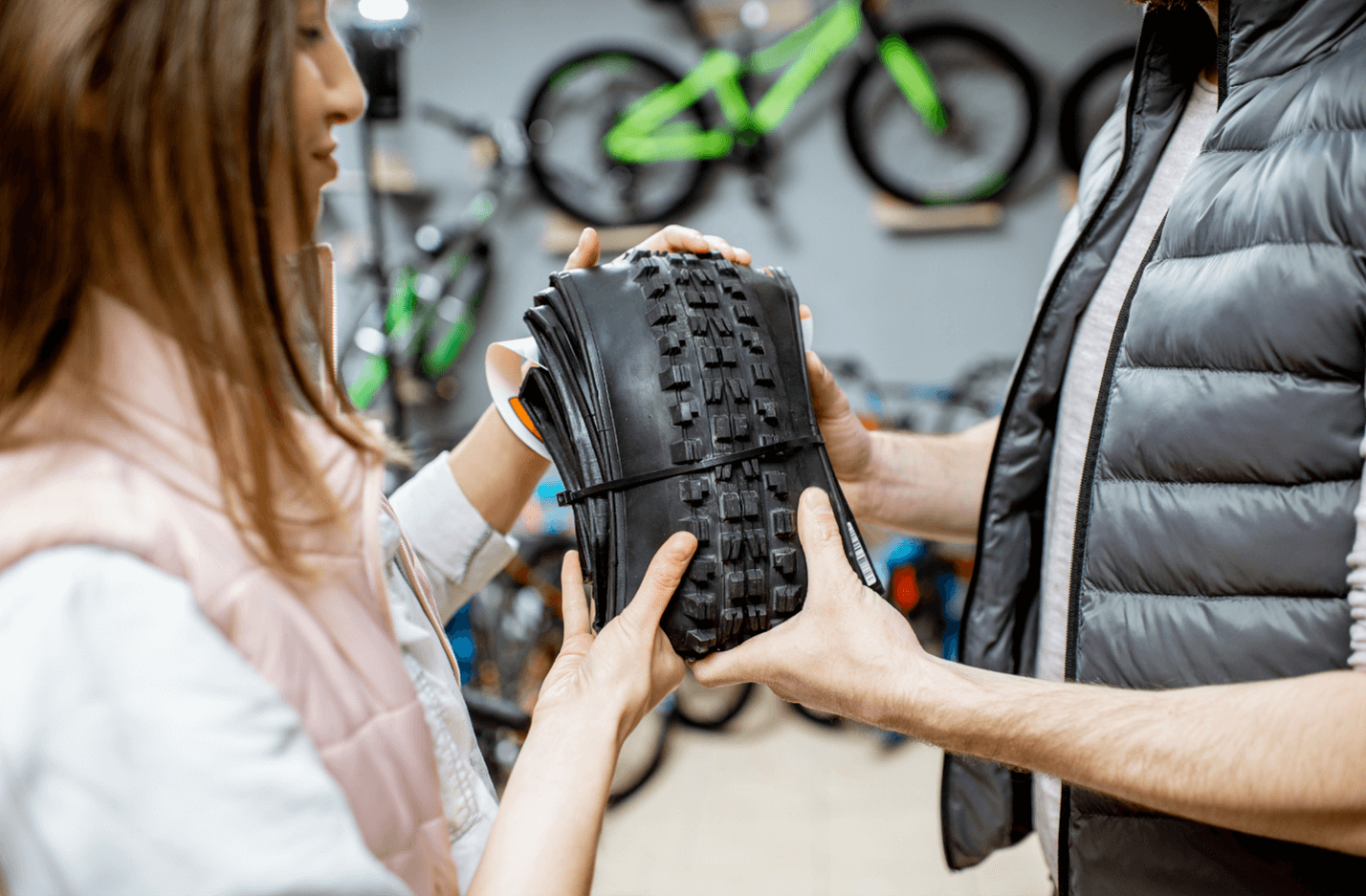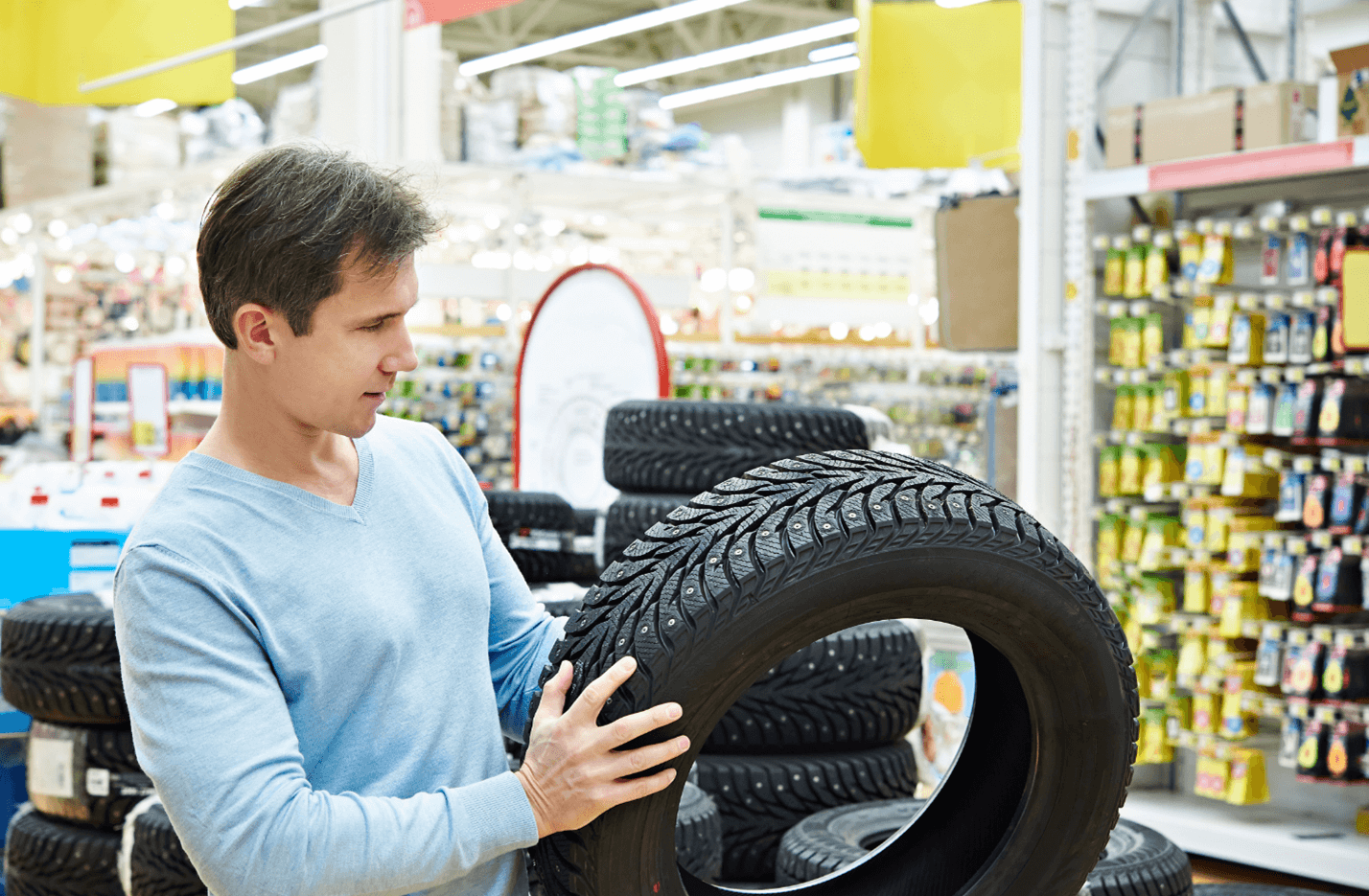If you want your car to drive smoother, save gas, and stand up to whatever weather challenges come your way, then you want to invest in the best car tires for your vehicle. Finding the right set for your car and driving habits, however, can be tricky. How can you find the best car tires while avoiding the unnecessary upsell? And once you’ve got a brand new set, how can you be sure that they’ll last as long as the manufacturer claims?
This Spacer guide to tires will serve as your mini-course on the tire industry. That way, you can buy tires with confidence and take care of your tires so they last for years to come.
Ready to become a tire expert? Let’s get started!
Overview of common tire types
The first thing you want to do when buying new tires is familiarize yourself with some common tire types. They fall into two different categories: passenger and truck/sports utility vehicle (SUV).
The first category covers the wide range of passenger vehicles from sedans, to sports cars, to your standard minivan. Trucks and SUVs make up the second category, as they tend to require tires that are slightly larger and better prepared for off-road capability.
Within these two categories, there are a couple of other definitions you should know, such as:
- Touring tires. This is a classic tire that provides the driver with a smooth, comfortable, even quiet, ride. It likely gets its name from the early days of “touring” cars; convertible passenger cars from the early 20th century which were known for their luxuriously smooth ride. To this day, the low tread of the touring tire allows for a comfortable driving experience, and because of the wider contact area with the road, you’ll enjoy great maneuverability on city streets and winding country roads. So, why don’t all cars stick to this classic design? Well, just like the touring car wasn’t designed to withstand extreme weather—it was, after all, open to the elements—the touring tire doesn’t stand up well to snow, rain, or ice. But still, it’s a great option for commuters in mild climate zones, and it’s one of the best car tires for city and highway driving.
- All-season tires. Touring tires and all-season tires often get grouped together, but they are distinct tire types. All-season tires have a slightly higher tread than touring tires, giving them a bit more dexterity in challenging weather conditions. You can think of all-season tires as the step between touring tires and all-terrain tires. They’ll give you better grip for the occasional snowfall or downpour than touring tires, but they’re not designed for heavy snowfall. Now, you might find some retailers offering all-season touring tires, which likely feature a tread type somewhere between the two models. But in general, the two tire types are separate.
- Snow/winter tires. If you’ve ever switched to winter tires midway through January, you know first-hand how well-engineered these tires are for snow. They’ve got a few design elements that make them the best car tires for challenging surfaces like snow or mud. One, the treads, which feature wide gaps and strategic lines, are designed to pick up snow and compact it, which allows the snow stuck in the tire treads to stick to the snow on the road. Seems counter-intuitive, but snow-to-snow traction is a huge advantage. The other secret is in the sipes, which are small squiggly lines or cuts in the treading of the tire to boost traction.
 Some winter tires can be studded, which might make you think of the unfortunate fashion trend of the 90s, but it is actually a clever way to add grip. It works by installing small metal or hard rubber spikes to the tire tread, much like the shoe coverings that mountaineers wear. There’s one final element that differentiates snow tires from the rest: their chemical composition. These tires are specially designed to hold up in freezing temperatures. One of the drawbacks of snow tires is that you don’t really want them on your car during the summer, as they’re quite loud and not very fuel-efficient. If you’re comfortable changing out the tires when the seasons change, then this isn’t too much of a hassle. But having to pay to swap out your tires every spring can rack up a big bill.
Some winter tires can be studded, which might make you think of the unfortunate fashion trend of the 90s, but it is actually a clever way to add grip. It works by installing small metal or hard rubber spikes to the tire tread, much like the shoe coverings that mountaineers wear. There’s one final element that differentiates snow tires from the rest: their chemical composition. These tires are specially designed to hold up in freezing temperatures. One of the drawbacks of snow tires is that you don’t really want them on your car during the summer, as they’re quite loud and not very fuel-efficient. If you’re comfortable changing out the tires when the seasons change, then this isn’t too much of a hassle. But having to pay to swap out your tires every spring can rack up a big bill. - All-terrain tires. Clearly, snow tires are built for one thing: getting you through the heavy winter months. But how about the adventurous off-roaders who want a more versatile tire? That’s where all-terrain tires come in. Like the distinction between touring and all-season tires, there are just a few slight, but significant, differences between snow and all-terrain tires. The gaps on the tread of all-terrain tires aren’t quite as dramatic as on snow tires, but they’re still prominent enough to give you superior grip and traction. All-terrain tires also have fewer sipes and don’t generally offer the option for studding. These changes make the all-terrain tire a more appropriate option for most driving scenarios. In fact, many all-terrain tires now are tested for snow capability for those living in areas with a moderate amount of snow. If you’re looking for the best car tires for many different driving landscapes, all-terrain won’t let you down.
- Performance. Alright, speed racers, these ones are for you! Performance tires are designed for—you guessed it—high-performance vehicles like sports cars. They’ve been designed for the best responsiveness and stability under high speeds, making them ideal on the racetrack. Now, you might have seen the label “performance” slapped onto the tire types that we’ve covered already. There are performance touring tires, for instance, and performance all-terrain tires. And while you can probably assume that these tires are of higher quality than the middle of the line option, performance tires were really engineered for a type of driving that doesn’t apply to the majority of car owners.
Do different tire types affect gas mileage?
In our recent article, Top 10 Tricks to Increasing your Vehicle’s Gas Mileage, we talked about how good tire pressure and new tires can improve your gas mileage.
But, there are a few more questions we can ask to expand on that idea. For instance, are some tire types better for your miles per gallon (MPG) than others? And what is the deal with fuel-efficient tires?
To find the answers, we have to look at something called rolling resistance. The physics can get complicated, but the basic idea of rolling resistance is that the more friction your tires generate, the more energy your car uses to get them rolling. In other words, a tire with low rolling resistance, or LRR, is better for your fuel economy.
So, which design elements give a tire low rolling resistance? Here are the three main ones:
- Tire tread: Low-tread tires that are built for smooth, slick driving—think touring, performance, and all-season or highway—are the best when it comes to gas mileage. Conversely, tires with deep tread, such as all-terrain tires and snow tires will lower your gas mileage by increasing friction and rolling resistance.
- Tire size: Smaller tires tend to give you better gas mileage while large, bulky ones will lower your MPGs.
- Rubber compound: One way that tire engineers have found to improve gas mileage is by tweaking with the rubber compounds. The best car tires for fuel efficiency are stiffer and harder than their predecessors. This improves something called rebound, which can decrease rolling resistance.
These days, with fuel efficiency on everyone’s mind, tire engineers are looking for all kinds of ways to lower the roll resistance in their tires. And, as we mentioned, it’s not just the tire tread that determines a tire’s rolling resistance.
That’s why you can buy low resistance all-terrain tires, which may not have the ideal tread for fuel efficiency but will feature other attributes to lower your MPGs. And while they may not be quite as fuel-efficient as a low rolling resistance (LRR) touring tire, they will still save you some money at the pump.
Finally, where do fuel-efficient tires play into all of this? If your head is swimming with the technical terms like rolling resistance, rebound, and chemical compounds, you’re not alone. Many tire sellers simply choose to label their LRR tires as fuel-efficient, because it’s more relatable to buyers. Fuel efficient and low rolling resistance tires are the same thing.
Which tire types last the longest?
Perhaps just as important as your tire’s performance and fuel efficiency is longevity. Tires can be expensive, and you want to make sure that you’re able to enjoy your set of tires for as many years as possible.
Treadwear is the biggest factor in determining how long a tire will last. Over time, the tread wears down until the tire loses grip, which is not only dangerous but can also significantly lower your car’s fuel efficiency.
So, how can you know how long a tire will last?
The treadwear rating, officially called the Uniform Tire Quality Grading, refers to a test used to calculate the average lifespan of a tire compared to a standard control tire.
It might sound boring until you learn how the pros go about testing. Here’s how it works: when a tire company wants to test their new tire or candidate tire, they take it to a high-security testing site in Texas. There, researchers put together a convoy of up to four testing vehicles, some with the candidate tires and some with control tires. Together, the convoy traverses 7,200 miles of public roads so that the tires experience the same driving conditions.
At the end, the treadwear of the candidate tire is compared to the control tire and the team calculates the rating. A rating of 100 means that the control tire and candidate tire experienced the same wear. A rating of 500 means that the candidate tire was expected to outlast the control tire by 5 times.
So, which tires fare the best in the tests? Though you might assume that a low-tread tire would wear down the quickest, the results are more nuanced. In fact, because of the higher friction caused by deep treads, all-terrain and snow tires have traditionally been known to wear their tread faster than other tire types.
But again, tire engineering is getting better all the time, and many of the old rules don’t apply. Instead of trying to figure out which categories have the longest lifespan, you should be looking at the specific treadwear rating of the tire types best for your vehicle.
How often should you change your tires?
Okay, you know your treadwear rating, but how can you use that number to know when to change your tires? The truth is—you can’t. The treadwear rating is more about making predictions than letting you know specifically when you’ll need to change your tires.
So here are a few ways to know when you need to change your tires:
- Check your owner’s manual. The manual will suggest that you change your tires after a certain number of miles.
- Check your tread. While some tires have lower tread than others by design, no tires should have a tread depth of fewer than 2/32 inches. If you don’t have a fancy tread measuring tool, you can stick with the classic penny test. With Lincoln’s head pointing towards your tire, insert the penny in one of the rib treads (those are the long tread lines that run lengthwise on your tire). If you can see the whole head, it’s time to get new tires as soon as possible. If Lincoln is up to his mid-forehead, start your search for new tires soon.
In the best driving conditions, you can expect to change your tires sometime between 25,000 and 50,000 miles, or no longer than 6 years after you bought them. In the meantime, you’ll want to rotate them about once every 3,000 to 8,000 miles.
How to purchase the best car tires for your driving needs
With all this newfound knowledge bouncing around in your head about the best car tires, it’s time to select the right set for your car and driving habits.

Here are a few scenarios to show how you can go about finding the right tires for your needs:
Example One: The Highway Commuter
In this scenario, you need a set of tires that will get you to and from work every day, and around the city or neighborhood for your weekend activities. You likely have a sedan, hatchback, or small SUV.
Perhaps you have to do some highway driving in the rain but even in the winter months, the highways are properly salted to prevent ice.
The best car tires for you, highway commuter, are touring tires or all-season tires. They’ll give you the best gas mileage and a smooth ride.
Example Two: The Road-tripping Family
Like the highway commuter, you’re preparing your car for long stretches of highway driving. Maybe you have a slightly larger car for shuttling the whole family and storing your camping equipment in the back.
The key for you will be choosing the best car tires for gas mileage and performance, and you have a few options. For the typical family summer camping trip in a well-populated place, you can stick with touring or all-season tires. If your family is more extreme, taking a huge truck to the middle of nowhere for some off-the-grid adventures, then you’ll need to look into tire types such as all-terrain or SUV-specific tires.
Example Three: The Winter Warrior
If you live in a region with heavy snow and ice, then, of course, snow tires are an obvious choice, winter warrior. You might hunker down inside for the big blizzard storms, but it won’t be because you’re worried that your car will get stuck in a snowbank!
If on the other hand, your winters are characterized by heavy rain, then we suggest sticking with your all-season tires. They’ll give you the best traction during the downpour.
Are you ready to find the best car tires for your vehicle?
In this article, we’ve covered everything you need to know about what tire types are best for your driving habits! So all that’s left is to buy your perfect set!
And before you go, we’ll leave you with a few tire car tips that will keep your tires in tip-top shape:
- Always maintain good tire pressure
- Park with care. Bumping your tires against the curb can cause them to become misshapen.
- Protect your tires from the elements. Fluctuations in temperature can affect tire pressure, so it’s best to park your car inside or in a covered parking space. With Spacer, you can rent a safe, affordable parking spot wherever you live in the US, from Boston to St Louis to San Francisco.
You can also check out our recent Car Maintenance Checklist for more tips to keep your car in the best shape possible!




